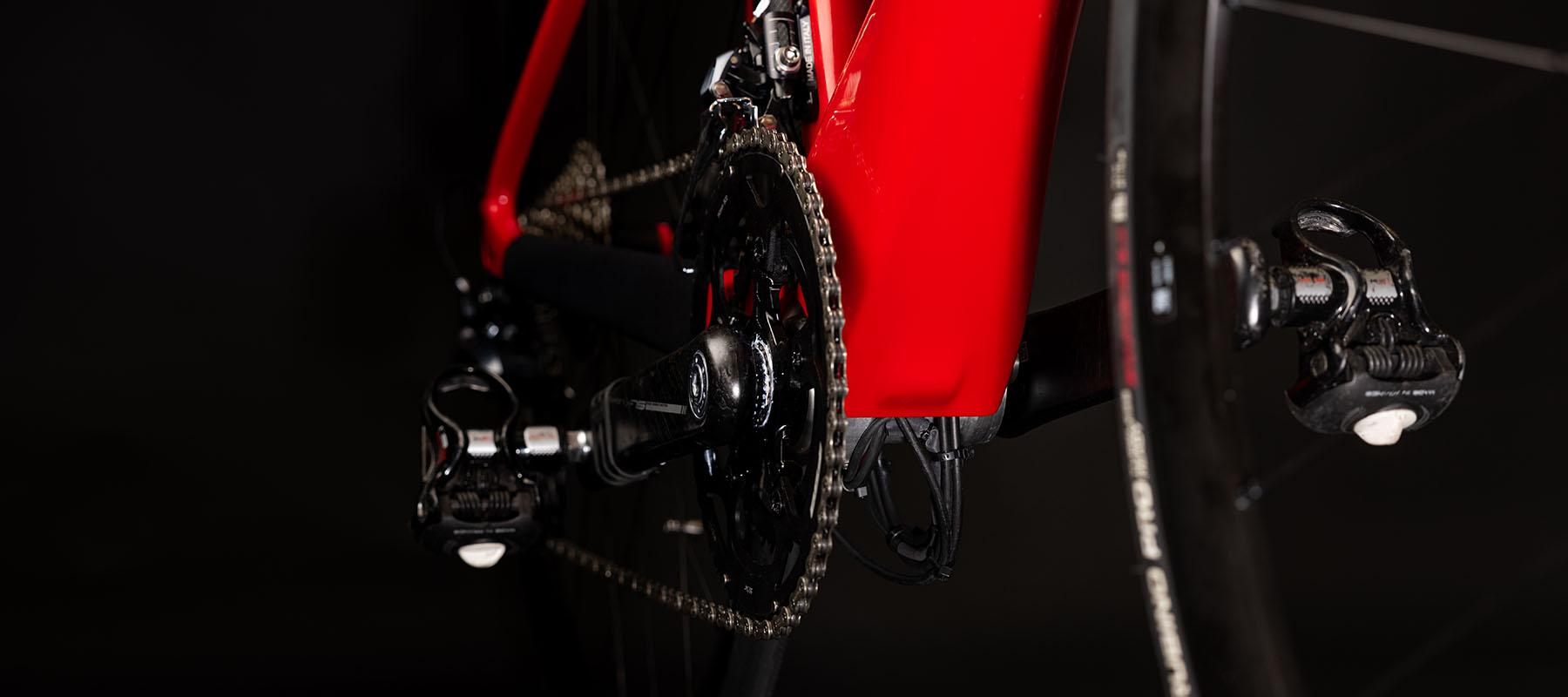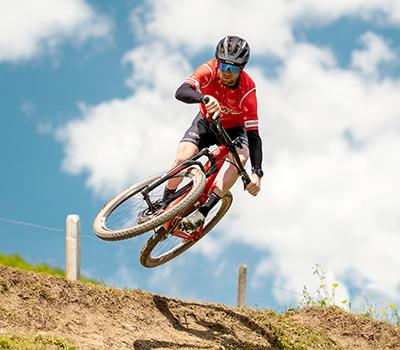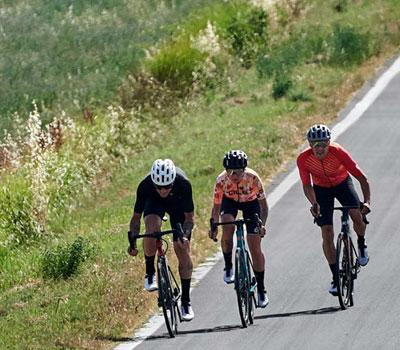The new lightness of e‑bikes
Details
Compromises between weight and power
The race to make the lightest e-bike is on. The manufacturers are giving everything and pushing each other to new levels of performance. However, no-compromise lightweight design has consequences ‒ as has maximum power. The ideal balance lies somewhere in between.
Higher, faster, lighter ‒ in the market for e-bikes and pedelecs, the providers also vie for superlatives. But the rules of physics are strict and the trends towards more performance and less weight are diametrically opposed. This either causes a true arms race for the highest motor power and battery capacity or a weight reduction come hell or high water ‒ you can’t have both.
An e-bike is only as strong as its weakest part.
With the BIKEDRIVE AIR, maxon is staying on the middle ground with its weight-optimized drive that has been designed with performance in mind. The drive system weighs only 3.5 kg and is first and foremost targeted at riders who cycle for sport. It provides a firm push, yet retains the natural cycling experience of an unmotorized bicycle, agile handling in curves, and optimal control. Aesthetic considerations also play a role, because its slimline design means that bike manufacturers can invisibly integrate the drive train into the down tube. Clever freewheeling technology ensures natural transitions from supported to non-supported riding and vice versa ‒ right when it is needed.
The best of both worlds
If you’ve ever lifted a 25 kg bike over a fence or carried it up the basement stairs, you’ll know to appreciate the lightweight design. In trail and gravel bikes in particular, the additional kilograms play a decisive role. Although keeping the total weight as low as possible is a worthy goal, a well-balanced e-bike needs a lot more. The weight distribution of the overall design is crucial, as is having reliable components and frames. Manufacturers such as Cipollini and Transalpes are already using the new maxon drive in lightweight minimal assist bikes. They bridge the gap between electrified and customary bikes, combining the best of both worlds.

No need to get trapped in the weight spiral
In particular riders with a low body weight find it challenging to handle the high weight of customary e-bikes. They generally don’t need a heavy battery and motor. More torque requires a stronger drive, which in turn calls for a higher battery capacity. The battery is the heaviest component and plays a decisive role in the weight distribution and the handling of the bike. As long as the battery still has juice, the additional kilograms don’t play much of a role. Yet once it has been drained, you might find yourself stuck with a heavy e-mountain bike. Then even specs like 90 newton-meters of torque is of no use. A higher total weight also means a more massive frame design. This additional mass has to be accelerated and decelerated as well, and negatively affects the center of gravity and the handling.
The secret behind lightweight e-bikes that are still comfortable to ride is having the right stiffness-to-weight ratio.
Lightweight, but not at all cost
On the other end of the spectrum, it is nowadays possible to create e-bikes with a total weight of less than ten kilograms, thanks to ultralight, efficient motors and compact batteries. These e-racers are optimized down to the smallest detail and are made almost entirely out of carbon. They are usually custom-made and cost as much as a compact car. Giving utmost priority to cutting down on weight also impacts the stability and comfortability. These are factors that, in addition to the weight and handling, play a central role from the point of view of the riders. If a frame is very stiff, it is largely torsion-resistant and effectively transmits the force from the crank to the rear wheel. However, this simultaneously means that shocks from the ground are also directly transmitted. Stiffness and comfortability are thus conflicting aspects.
It’s the whole that counts
The secret behind lightweight e-bikes that are still comfortable to ride is having the right stiffness-to-weight ratio (STW). Carbon machining has become so advanced that it is now possible to built a frame that combines high stiffness around the bottom bracket and steering head with a high degree of comfort. As a result, carbon frames have the best STW ratios ‒ but only in the high-end range. Because not all carbons are equal ‒ the material quality and machining processes play a large role. This requires a great amount of know-how, care, precision, and craftsmanship.
After a fall, invisible microcracks called delaminations can form in improperly processed carbon. This damage can only be detected on X-rays, but further stress can cause the crack to propagate suddenly. Specialists are required for the diagnostics and repair, and usually charge high fees. An e-bike thus is only as good as its weakest part. It is important that the drive system, brakes, and other components are matched to the weight. The permissible total weight also depends on the rider and on whether luggage has to be transported on the bike as well. High-quality e-bikes therefore can also score points with qualities other than the lowest weight: namely with the cycling experience they provide, the comfort of the ride, and their durability.


